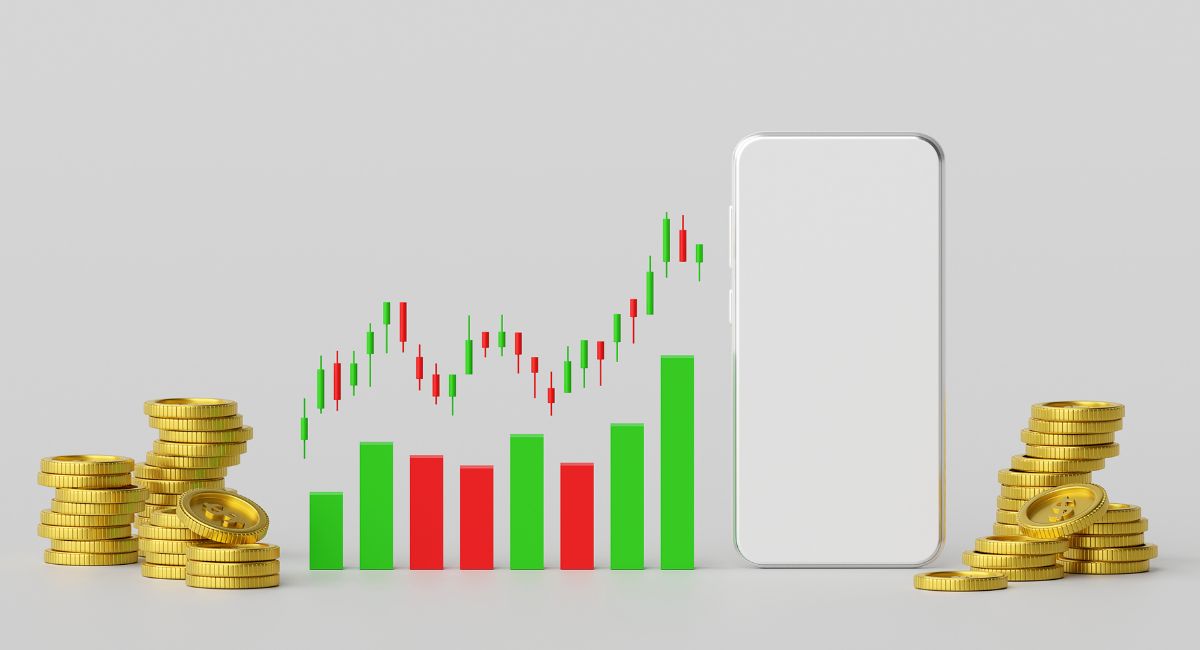January 18, 2024 by Diana Ambolis
578
Cryptocurrency trading has become a cornerstone of the digital economy, and the choice of a trading platform significantly influences the user experience. In this article, we delve into the top 10 cryptocurrency trading platforms that provide users with a seamless and user-friendly environment for their trading endeavors. 1. Binance: Known for its extensive range of
Cryptocurrency trading has become a cornerstone of the digital economy, and the choice of a trading platform significantly influences the user experience. In this article, we delve into the top 10 cryptocurrency trading platforms that provide users with a seamless and user-friendly environment for their trading endeavors.
1. Binance:
Known for its extensive range of cryptocurrencies and advanced trading features, Binance stands out as one of the largest and most user-friendly platforms. With a clean interface, mobile app support, and a variety of trading pairs, it caters to both beginners and experienced traders.
2. Coinbase:
As a pioneer in the cryptocurrency trading platforms space, Coinbase is celebrated for its simplicity and ease of use. It serves as an excellent entry point for newcomers with a straightforward interface, educational resources, and a secure wallet. Coinbase’s mobile app enhances accessibility for users on the go.
3. Kraken:
Kraken is a well-established exchange known for its reliability and comprehensive security features. Offering a wide array of cryptocurrencies, margin trading, and futures contracts, Kraken caters to both beginners and professional traders seeking a robust and feature-rich platform.
4. Gemini:
Founded by the Winklevoss twins, Gemini is recognized for its emphasis on regulatory compliance and security. The platform offers a user-friendly interface, a variety of trading pairs, and a range of investment products, making it suitable for both beginners and institutional investors.
5. eToro:
eToro stands out for its unique social trading features, allowing users to follow and copy the trades of successful investors. The platform’s intuitive interface, combined with social elements, makes it an engaging choice for traders looking to learn from others while executing their strategies.
6. OKEx:
With a global presence, OKEx offers a comprehensive suite of trading services, including spot and futures trading, as well as decentralized finance (DeFi) options. The platform’s intuitive interface, coupled with a wide range of trading products, caters to diverse trading preferences.
7. Bitstamp:
Bitstamp, one of the longest-running exchanges, focuses on providing a secure and straightforward trading experience. With a user-friendly interface and support for various fiat currencies, Bitstamp is an attractive option for those seeking simplicity and reliability.
8. Huobi:
Huobi is a global cryptocurrency exchange offering a diverse range of assets and trading options. Its user-friendly interface, advanced trading features, and competitive fees make it an appealing choice for traders of all levels of experience.
9. KuCoin:
KuCoin is known for its extensive list of supported cryptocurrencies and low trading fees. The platform’s user-friendly interface and a variety of trading pairs make it suitable for both beginners and more experienced traders seeking a diverse selection of assets.
10. Cex.io:
Cex.io provides a user-friendly platform for buying, selling, and trading a variety of cryptocurrencies. With features like margin trading and fiat support, Cex.io caters to a broad audience, offering a seamless experience for both novice and experienced traders.
Also, read- The Future of Startup Fundraising Through Blockchain and Cryptocurrencies
Top 11 Security concerns in Cryptocurrency Trading platforms:

Security is a paramount concern in the realm of crypto trading, given the decentralized and digital nature of cryptocurrencies. Crypto trading platforms play a crucial role in safeguarding user funds and personal information. Let’s delve into the importance of security features and practices implemented by these platforms:
- Secure Architecture: Crypto trading platforms need to have a robust and secure architecture. This includes using encryption protocols, secure sockets layer (SSL) certificates, and adopting best practices in network security to protect communication between users and the platform.
- Two-Factor Authentication (2FA): Enabling two-factor authentication adds an extra layer of security. This typically involves combining a password with a temporary code sent to the user’s mobile device, enhancing the overall protection of user accounts.
- Cold and Hot Wallets: Platforms should implement a combination of cold wallets (offline storage) and hot wallets (online storage) for managing user funds. Cold wallets provide a higher level of security as they are not connected to the internet and are less susceptible to hacking.
- Regular Security Audits: Periodic security audits conducted by third-party cybersecurity experts help identify vulnerabilities in the platform’s infrastructure and code. Regular audits enhance the overall security posture and ensure that any weaknesses are promptly addressed.
- DDoS Protection: Distributed Denial of Service (DDoS) attacks are common in the crypto space. Effective DDoS protection measures, such as traffic filtering and load balancing, help maintain platform availability during times of high traffic and malicious attacks.
- Withdrawal Whitelists: Users should have the option to set withdrawal whitelists, specifying approved addresses for fund withdrawals. This adds an extra layer of protection, preventing unauthorized transfers even if an account is compromised.
- Insurance and Fund Recovery: Some platforms offer insurance coverage for user funds. Additionally, having a fund recovery plan in place, such as a reserve fund or insurance for unforeseen events like hacks, provides users with confidence in the platform’s commitment to safeguarding their assets.
- Educational Resources: Cryptocurrency trading platforms should provide educational resources to users on security best practices. This includes guidance on creating strong passwords, recognizing phishing attempts, and understanding potential security risks.
- Regulatory Compliance: Platforms need to adhere to relevant regulatory standards and compliance measures. Compliance not only ensures legal standing but also indicates a commitment to security and transparency.
- Privacy Protection: Safeguarding personal information is equally crucial. Robust data protection measures, including encryption and secure data storage practices, help prevent unauthorized access to user details.
- Transparent Communication: Transparent communication during security incidents or updates is essential. Keeping users informed about any security-related developments builds trust and allows them to take necessary precautions.
In conclusion, the implementation of robust security features and practices is imperative for crypto trading platforms. Users entrust these platforms with their funds and personal information, and a comprehensive security framework is vital to protect against evolving threats and ensure a secure and trustworthy trading environment.
Margin Trading Strategies:

Margin trading, which involves borrowing funds to increase the size of a trading position, can be profitable but comes with increased risk. Traders engaging in margin trading should carefully consider strategies and risk management practices to navigate the complexities of leveraged positions. Here are some key strategies and considerations:
- Risk Management:
- Set Stop-Loss Orders: Determine a predetermined point at which to sell a position to limit losses. Stop-loss orders help control risk by automatically triggering a sale if the price reaches a specified level.
- Use Take-Profit Orders: Similar to stop-loss orders, take-profit orders allow traders to secure profits by automatically selling when a predetermined profit level is reached.
- Diversify Portfolio: Avoid over-concentration in a single asset. Diversifying the portfolio helps spread risk and reduces the impact of adverse price movements in a specific asset.
- Position Sizing:
- Calculate Proper Position Size: Determine the appropriate position size based on the available margin, leverage, and risk tolerance. Overleveraging can lead to significant losses, so it’s essential to trade within one’s means.
- Technical Analysis:
- Chart Analysis: Use technical analysis tools, such as trendlines, support and resistance levels, and indicators, to identify potential entry and exit points. Technical analysis helps traders make informed decisions based on historical price patterns and trends.
- Indicator Signals: Pay attention to indicators like Moving Averages, Relative Strength Index (RSI), and Moving Average Convergence Divergence (MACD) for additional insights into market conditions and potential reversal points.
- Fundamental Analysis:
- Stay Informed: Be aware of news and events that could impact the market. Fundamental analysis involves evaluating the underlying factors affecting the value of an asset, such as economic indicators, company news, or regulatory developments.
- Leverage Considerations:
- Understand Leverage: While leverage can amplify profits, it also magnifies losses. Understand the risks associated with the chosen level of leverage and use it judiciously.
- Avoid Excessive Leverage: Using high levels of leverage increases the risk of liquidation and margin calls. Traders should be cautious and avoid excessive leverage that may lead to a loss of the entire margin.
- Market Conditions:
- Volatility Assessment: Consider market volatility when engaging in margin trading. High volatility can lead to rapid price movements, increasing the likelihood of triggering stop-loss orders.
- News and Events: Be aware of upcoming events or announcements that may impact the market. News-driven price movements can be unpredictable, and traders should exercise caution during such periods.
- Continuous Learning:
- Stay Educated: The crypto market is dynamic, and continuous learning is essential. Stay updated on market trends, trading strategies, and risk management techniques to adapt to changing market conditions.
- Regularly Review Strategies:
- Periodic Evaluation: Regularly review and evaluate trading strategies. Adjustments may be necessary based on changing market conditions, personal risk tolerance, or evolving trading goals.
Remember, margin trading requires a thorough understanding of the market, risk management, and one’s own risk tolerance. Traders should start with small positions, use leverage conservatively, and continuously refine their strategies based on experience and market dynamics.
Trends in Crypto Trading:
The cryptocurrency trading platforms space is dynamic, and several emerging trends are shaping the landscape. Two significant trends are the integration of decentralized finance (DeFi) and non-fungible tokens (NFTs) into trading platforms. Let’s delve into each of these trends:
- Decentralized Finance (DeFi) Integration:
- Automated Market Makers (AMMs): DeFi platforms often utilize AMMs, such as Uniswap and SushiSwap, to facilitate decentralized trading. These protocols use smart contracts to enable users to trade directly from their wallets without the need for traditional order books.
- Liquidity Pools: Traders can participate in liquidity provision by adding funds to decentralized liquidity pools. In return, they earn fees from trades that occur in these pools. This trend has democratized liquidity provision, allowing users to actively participate in the DeFi ecosystem.
- Decentralized Exchanges (DEXs): The rise of DEXs has challenged the dominance of centralized exchanges. DEXs offer users greater control over their funds and eliminate the need for intermediaries, aligning with the principles of decentralization.
- Non-Fungible Tokens (NFTs) in Trading Platforms:
- NFT Marketplaces: Cryptocurrency trading platforms are increasingly integrating NFT marketplaces, allowing users to trade and invest in unique digital assets. These assets, often representing digital art, collectibles, or gaming items, are stored on blockchain platforms, ensuring provenance and scarcity.
- Fractionalized Ownership: Some platforms allow users to buy fractions of high-value NFTs, enabling broader participation in the market. This fractionalized ownership model opens up NFT investment opportunities to a more extensive range of investors.
- Cross-Platform Integration: Trading platforms are exploring ways to seamlessly integrate NFT trading with traditional cryptocurrency markets. This integration provides users with a unified platform for both fungible and non-fungible assets.
- Algorithmic Trading and Bots:
- Algorithmic Trading Strategies: Traders are increasingly relying on algorithmic trading strategies powered by advanced algorithms and machine learning. These strategies automate the execution of trades based on predefined criteria, enabling traders to react quickly to market conditions.
- Trading Bots: The use of trading bots for executing strategies, market making, and arbitrage has become prevalent. These bots can operate 24/7, taking advantage of market opportunities even when traders are not actively monitoring the market.
- Regulatory Developments:
- Compliance and Regulation: As the cryptocurrency trading platforms mature, there is a growing emphasis on regulatory compliance. cryptocurrency Trading platforms are adapting to evolving regulatory frameworks, incorporating Know Your Customer (KYC) and Anti-Money Laundering (AML) measures to enhance security and transparency.
- Institutional Involvement:
- Increased Institutional Adoption: Institutional investors are showing a growing interest in cryptocurrency trading. The integration of institutional-grade infrastructure, such as secure custody solutions and compliance tools, is making the market more appealing to traditional financial institutions.
- Tokenization of Assets:
- Asset Tokenization: The tokenization of traditional assets, such as real estate, stocks, and commodities, is gaining traction. This involves representing ownership of these assets as tokens on blockchain platforms, enabling fractional ownership and increased liquidity.
- Sustainability and Green Finance:
- Focus on Sustainability: There is a growing emphasis on sustainability and environmentally friendly practices in the crypto space. Traders and platforms are seeking ways to reduce the environmental impact of cryptocurrency mining and transactions, promoting the development of eco-friendly alternatives.
- Integration of Decentralized Identity (DID):
- Enhanced Security with DID: Some cryptocurrency trading platforms are exploring the integration of Decentralized Identity (DID) solutions to enhance user security. DID ensures that users have control over their identity and personal information, reducing the risk of unauthorized access and fraud.
The cryptocurrency trading space is evolving rapidly, driven by technological advancements and changing market demands. The integration of DeFi, NFTs, algorithmic trading, regulatory compliance, institutional involvement, asset tokenization, sustainability considerations, and innovative security measures are among the key trends shaping the future of cryptocurrency trading platforms. Traders and platforms need to stay adaptive and responsive to these trends to navigate the evolving landscape successfully.
Conclusion
The cryptocurrency trading platforms landscape is diverse, and choosing the right platform is crucial for a seamless experience. Each cryptocurrency trading platform on this list offers unique features, catering to different preferences and trading styles, ultimately providing users with a range of options to suit their needs.
































































